Xavier Mhike
Xavier Mhike is the Scientist – Product Development for Southern Africa at CIMMYT HQ in Mexico.
Xavier Mhike is the Scientist – Product Development for Southern Africa at CIMMYT HQ in Mexico.
Fall armyworm (FAW) is present in 109 countries in Africa, the Middle East, South and East Asia, and Oceania, and it has spread due to rapid increases in global trade. Maize is highly susceptible to the disease, but it affects more than 300 plant species.
Research by organizations such as the International Maize and Wheat Improvement Center (CIMMYT), CGIAR and CABI has developed effective strategies and tools for managing the disease, such as improved seed, proven agronomic practices, and biologic and chemical crop-protection tools.
An article in The Farming Forum explores FAW prevention developments and partnerships that are helping smallholder farmers protect their crops against this devastating disease.
Read the original article: Taking Aim Against the Dire Threat of Fall Army Worm
For the first time ever, a biotechnology team has identified vegetative storage proteins (VSP) in maize and activated them in the leaves to stockpile nitrogen reserves for release when plants are hit by drought, which also causes nutrient stress, according to a recent report in Plant Biotechnology Journal. In two years of field testing, the maize hybrids overexpressing the VSP in leaf cells significantly out-yielded the control siblings under managed drought stress applied at the flowering time, according to Kanwarpal Dhugga, a principal scientist at the International Maize and Wheat Improvement Center (CIMMYT).
“One of the two most widely grown crops, maize increasingly suffers from erratic rainfall and scarcer groundwater for irrigation,” Dhugga said. “Under water stress, nitrogen availability to the plant is also attenuated. If excess nitrogen could be stored in the leaves during normal plant growth, it could help expedite the plant’s recovery from unpredictable drought episodes. In our experimental maize hybrids, this particular VSP accumulated to more than 4% in mesophyll cells, which is five times its normal levels, and offered an additional, dispensable source of nitrogen that buffered plants against water deficit stress.”
Dhugga noted as well that the study, whose authors include scientists from Corteva Agriscience, the Bill & Melinda Gates Foundation, and the US Department of Agriculture (USDA), provides experimental evidence for the link between drought tolerance and adequate nitrogen fertilization of crop plants. “This mechanism could also help farmers and consumers in sub-Saharan Africa, where maize is grown on nearly 40 million hectares, accounts for almost one-third of the region’s caloric intake, and frequently faces moderate to severe drought.”
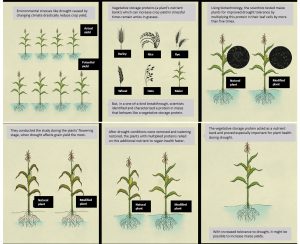
Read the full study:
A vegetative storage protein improves drought tolerance in maize.
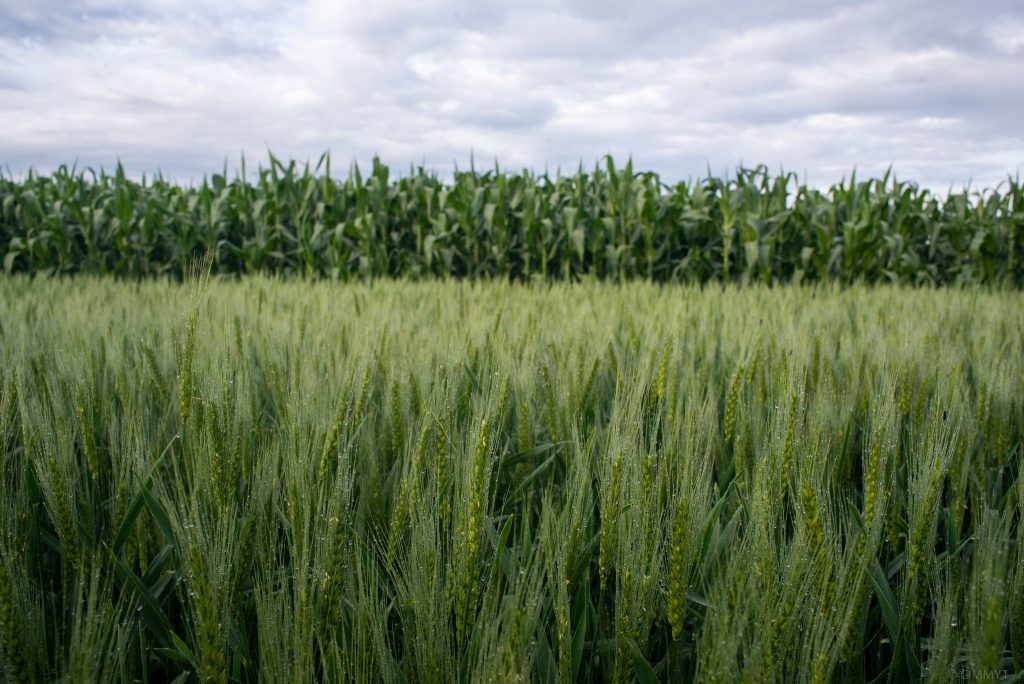
The first meetings of the Accelerating Genetic Gains in Maize and Wheat for Improved Livelihoods (AGG) wheat and maize science and technical steering committees — WSC and MSC, respectively — took place virtually on 25th and 28th September.
Researchers from the International Maize and Wheat Improvement Center (CIMMYT) sit on both committees. In the WSC they are joined by wheat experts from national agricultural research systems (NARS) in Bangladesh, Ethiopia, Kenya, India, and Nepal; and from Angus Wheat Consultants, the Foreign, Commonwealth & Development Office (FCDO), HarvestPlus, Kansas State University and the Roslin Institute.
Similarly, the MSC includes maize experts from NARS in Ethiopia, Ghana, Kenya and Zambia; and from Corteva, the Foundation for Food and Agriculture Research (FFAR), the International Institute for Tropical Agriculture (IITA), SeedCo, Syngenta, the University of Queensland, and the US Agency for International Development (USAID).
During the meetings, attendees discussed scientific challenges and opportunities for AGG, and developed specific recommendations pertaining to key topics including breeding and testing scheme optimization, effective engagement with partners and capacity development in the time of COVID-19, and seed systems and gender intentionality.
Discussion groups noted, for example, the need to address family structure in yield trials, to strengthen collaboration with national partners, and to develop effective regional on-farm testing strategies. Interestingly, most of the recommendations are applicable and valuable for both crop teams, and this is a clear example of the synergies we expect from combining maize and wheat within the AGG project.
All the recommendations will be further analyzed by the AGG teams during coming months, and project activities will be adjusted or implemented as appropriate. A brief report will be submitted to the respective STSCs prior to the second meetings of these committees, likely in late March 2021.
Scientists part of the Seed Production Technology for Africa (SPTA) and the Maize Lethal Necrosis Gene Editing projects are leveraging innovative technologies to transform seed production systems and speed up the delivery of disease resistance in elite new hybrids. This research is helping smallholder farmers in sub-Saharan Africa to access high-quality seed of new hybrids that were bred to perform under stressful low-input, drought-prone conditions, including farming regions impacted by maize lethal necrosis (MLN).
Fast delivery of MLN-tolerant varieties
The fight against maize lethal necrosis (MLN) has persisted for almost ten years now.
Collaborative efforts in diagnostics, management and systematic surveillance have limited its spread and confined the disease to the eastern Africa region. However, ongoing work is required to efficiently develop MLN-tolerant varieties for smallholders in endemic areas and prepare for the potential further movement of the disease.
“Maize lethal necrosis still exists. It has not been eradicated. Even though it has reduced in its prevalence and impact, it is still present and is a latent threat in Ethiopia, Kenya, Rwanda, Tanzania and Uganda, with potential to spread further,” said B.M. Prasanna, director of CIMMYT’s Global Maize Program and the CGIAR Research Program on Maize.
“That is why the work of the gene editing project is critical to rapidly change the genetic component of those susceptible parent lines of popular hybrids into MLN-tolerant versions,” said Prasanna. Scientists will edit the four parent lines of two popular hybrids, currently grown by farmers in Kenya and Uganda, which are susceptible to MLN. The edited MLN-tolerant lines will be used to make MLN-tolerant versions of these drought-tolerant hybrids.
Through gene editing technology, the time it takes to develop hybrids using traditional breeding methods will be cut in half. By 2025, the edited MLN-tolerant hybrids will be available for planting on approximately 40,000 hectares by about 20,000 Kenyan farmers.
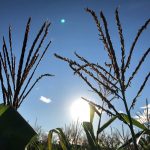
Business as unusual
The unique seed production technology developed by Corteva Agriscience seeks to transform the seed production process in sub-Saharan Africa. This technology utilizes a dominant non-pollen producing maize gene to create female plants that are unable to produce pollen.
Seed companies that use seed production technology eliminate the need to detassel the female parent: a manual process through which tassels are removed from plants to prevent self-pollination and ensure that the intended male parent is the only source of pollen in the hybrid seed production field. Targeted small and medium-size seed companies could make significant savings to the cost of production if they were to eliminate manual detasseling. The method also helps to ensure the purity of the hybrid seed by removing the risk of unintentional self-pollination.
Hybrids produced using the seed production technology, characterized as 50 percent non-pollen producing (FNP), are unique since only half of the plants will produce pollen in the field. FNP hybrids re-allocate energy from the tassel and pollen production to grain formation, thus delivering an additional 200 kilograms per hectare yield advantage to the farmer. This represents a 10 percent productivity boost for farmers who will harvest approximately 2 tons per hectare, the average maize yield across sub-Saharan Africa. Farmers engaged in participatory research have demonstrated preference for FNP hybrids and associate the trait with higher yield and larger ear size.
As the first phase of Seed Production Technology for Africa (SPTA) wraps up, the collaborators are preparing for the next phase that will focus on commercializing, scaling up and increasing smallholders’ access to FNP. “This is among the unique partnerships funded by the foundation and I am hopeful that this incredible work will continue through the next phase,” said Gary Atlin, program officer at the Bill & Melinda Gates Foundation.
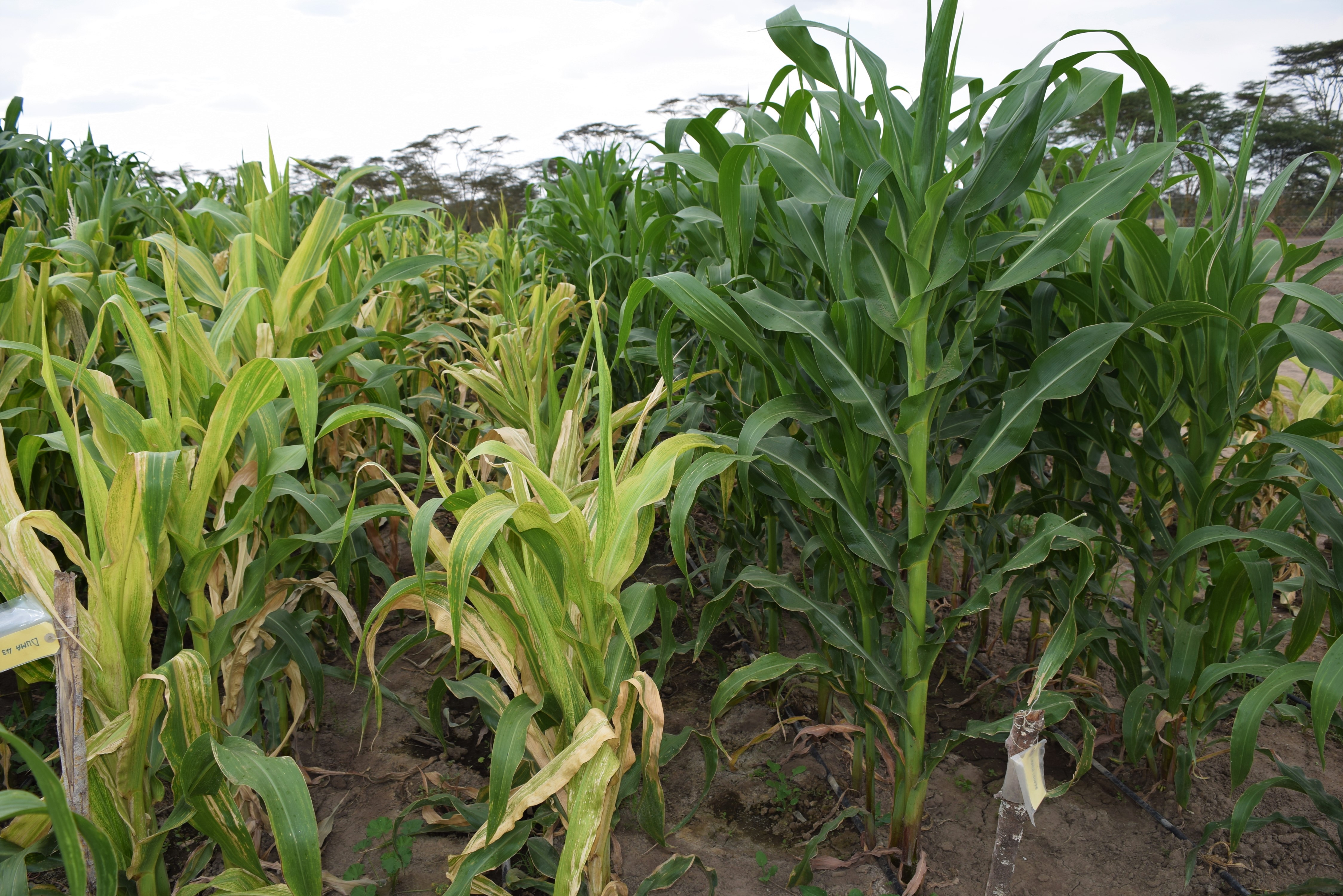
A win-win collaboration
Research and development work under the SPTA and the MLN Gene Editing projects has immensely benefited from the support of public and private partners. Seed companies and national institutions have contributed to improving access to and knowledge of these technologies as well as creating a crucial link with farmers. Ongoing engagement with regulatory agencies through the different stages of the projects ensures transparency and fosters understanding.
In order to assess the progress of these two initiatives, representatives from regulatory agencies, seed trade associations, seed companies, national agricultural institutions and funders came together for a virtual meeting that was hosted on July 29, 2020.
“KALRO embraces partnerships such as those that are delivering these two projects. That synergy helps us to resolve challenges faced by farmers and other actors in various agricultural value chains,” observed Felister Makini, deputy director general of Crops at KALRO.
As the primary technology provider, Corteva Agriscience provides the seed production technology system on a royalty-free basis and grants access to key gene editing technologies, which are the foundation for the two projects. Corteva Agriscience is also actively involved in project execution through collaborative scientific support.
“We have appreciated the opportunity to work with CIMMYT, KARLO, Agricultural Research Council (ARC) of South Africa and the Bill & Melinda Gates Foundation to bring some of the technologies and tools from Corteva to address significant challenges facing smallholder farmers in Africa. We could not have done this alone, it requires the partnerships that exist here to bring forth these solutions,” said Kevin Diehl, director of the Global Seed Regulatory Platform at Corteva Agriscience.
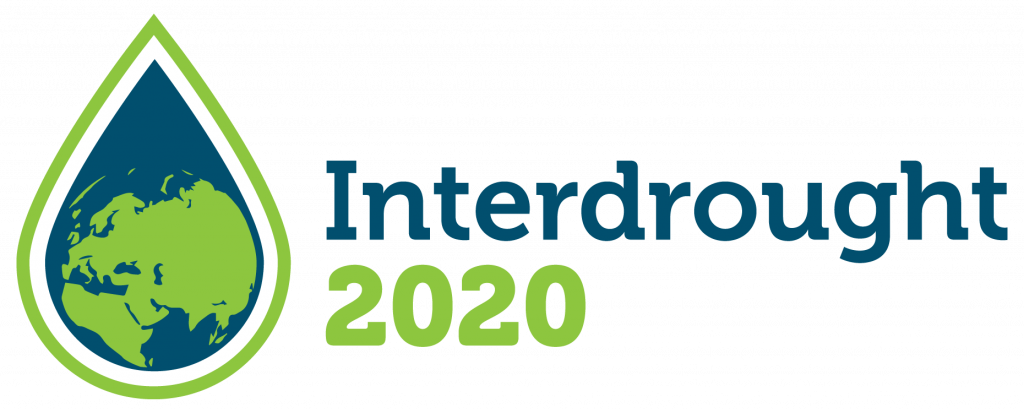
The critical global challenge of significantly increasing food production by 2050 is exacerbated by water limitations. Droughts and water scarcity affect crop production across the world and global climate warming is aggravating this effect. A central challenge for researchers and policymakers is to devise technologies that lend greater resilience to agricultural production in drier environments.
The Interdrought 2020 congress presents the latest developments to address this global challenge.
Interdrought 2020 was scheduled to be held in Mexico City in March 2020. As it was not possible to proceed with the congress as a face-to-face meeting due to the travel restrictions associated with the COVID-19 pandemic, the organizing committee has delivered the scientific program of the congress online. Congress proceedings are available at interdrought2020.cimmyt.org.
Today the organizing committee extended the reach of the congress proceedings to the global community by providing free online access to 43 presentations, 75 abstracts and 35 posters. The complete book of abstracts can also be downloaded. To date over 10,000 members of the scientific community have been invited to watch presentations and read the proceedings online.
Internationally recognized keynote speakers participated in the seven main sessions, supported by nine symposia convened by global experts, on topics ranging from breeding and management approaches to the basic science of plant–water relations.
State-of-the-art research and technology
Interdrought 2020 is an opportunity for scientific leaders from across the world to share the latest research and technology developments to advance plant production in water-limited situations. Interdrought 2020 embraces the philosophy of presenting and integrating results of both applied and basic research towards the development of solutions for improving crop production under drought-prone conditions.
Interdrought 2020, also known as Interdrought VI (IDVI) is the sixth congress in the series. It builds on the success of previous congresses held in Montpellier in 1995, Rome in 2005, Shanghai in 2009, Perth in 2013, and Hyderabad in 2017.
The congress was organized by the International Maize and Wheat Improvement Center (CIMMYT) and the University of Queensland. The organizers share a strong history of collaboration in crop research and agronomy that seeks to increase wheat’s tolerance to drought and its yield potential in hot conditions, such as those seen in Queensland, Australia, and Sonora, Mexico.
The organizers and the congress committee would like to thank major sponsors Corteva, the Grains Research and Development Corporation (GRDC), the University of Queensland, and supporting sponsors in silico Plants, the Journal of Experimental Botany, Illumina, Analitek, and LI-COR. Our sponsors’ belief in the value of the scientific content enabled us to deliver congress proceedings to not only delegates but the broader scientific community.
For more information, please contact
Professor Graeme Hammer
Chair of the Interdrought 2020 congress committee
g.hammer@uq.edu.au
About CIMMYT
The International Maize and Wheat Improvement Center (CIMMYT) is the global leader in publicly-funded maize and wheat research and related farming systems. Headquartered near Mexico City, CIMMYT works with hundreds of partners throughout the developing world to sustainably increase the productivity of maize and wheat cropping systems, thus improving global food security and reducing poverty. CIMMYT is a member of the CGIAR System and leads the CGIAR Research Programs on Maize and Wheat and the Excellence in Breeding Platform. The Center receives support from national governments, foundations, development banks and other public and private agencies. For more information, visit staging.cimmyt.org.
QAAFI at the University of Queensland
The Queensland Alliance for Agriculture and Food Innovation (QAAFI) is a research institute of the University of Queensland supported by the Queensland Government via the Department of Agriculture and Fisheries. QAAFI is comprised of four inter-related research centres working across crops, horticulture, animals, and nutrition and food sciences, with a focus on addressing challenges in the tropical and subtropical systems. For more information visit www.qaafi.uq.edu.au/about.
The Maize Lethal Necrosis (MLN) Gene Editing Project uses gene editing technology to transform four elite CIMMYT maize lines which are susceptible to a devastating maize disease known as MLN. The disease first appeared in Kenya in 2011, and by 2013 it had reduced maize yields across the country by an average of 22%, resulting in loss of production worth $180 million and forcing many smallholder farmers to abandon planting maize. By 2014 it had spread to D.R. Congo, Ethiopia, Kenya, Rwanda, Tanzania and Uganda, hence posing a major threat to the food security and livelihoods of millions of Africans.
CIMMYT and its partners have responded to the problem by successfully developing MLN-tolerant hybrids through conventional backcrossing, which takes approximately 4-5 years. On the other hand, with the use of a gene editing technology known as CRISPR-Cas9, the breeding process can be accelerated, thereby reducing the time required to 2-3 years only, so that smallholders get faster access to improved maize varieties.
In partnership with Corteva Agriscience — which has significant expertise in the genome-editing field and who is the technology owner — and KALRO (Kenya Agricultural and Livestock Research Organization), CIMMYT scientists have been able to make a breakthrough via the CRISPR-Cas9 technology. The technology, Clustered Regularly Interspersed Short Palindromic Repeats (CRISPR) along with CRISPR-associated System (Cas) containing Protein 9, functions to replicate natural mutations in maize that will help strengthen its resistance to MLN. At the same time, this precisely targeted crop improvement process eliminates the transfer of many undesirable genes that would often accompany the desired ones as with the case in traditional backcrossing.
Under this project, four CIMMYT inbred lines, that are parents of two commercial hybrids in eastern Africa but susceptible to MLN, have been selected to undergo gene editing to become MLN-resistant. The edited, MLN-resistant lines will in turn be used to produce MLN-resistant hybrids which will still carry all the farmer-preferred agronomic traits including drought tolerance, similar to other elite maize hybrids developed by CIMMYT and released through partners.
CIMMYT is working in close collaboration with KALRO and other partners from the public and private sectors to increase the number of MLN-resistant Africa-adapted inbred lines and hybrids, as well as to make deployment efforts. By 2025, subject to compliance with regulatory procedures, commercial seeds of the gene-edited MLN-resistant elite maize hybrids will be available to up to 20,000 smallholder farmers for approximately 40,000 hectares of planting. In line with the CGIAR Principles on the Management of Intellectual Assets and CIMMYT’s constant endeavor to treat its improved germplasm as international public good, the MLN-resistant hybrids will be available royalty-free and seed companies entering into commercialization/licensing agreements in connection with this project will not be allowed to charge smallholder farmers higher seed cost. In this way, more farmers in MLN-affected countries in eastern and Central Africa can eventually benefit from increased supply of high-yielding, MLN-resistant and affordable maize products.
Related documents:
“Can we sustainably feed the nine to ten billion people in our planet in 30 years?” asked Kenneth M. Quinn, president of the World Food Prize Foundation. “This question becomes even more challenging with two current game changers: conflict and climate change.”
Food and agriculture experts met in Des Moines, Iowa, to discuss these issues at the Borlaug Dialogue and awarding of the 2019 World Food Prize.
The focus has shifted over the last few years from food to food systems, now including health and nutrition. “We need an integrated agri-food systems approach for food security, nutrition, nature conservation and human security,” said Bram Govaerts, director of the Integrated Development program at the International Maize and Wheat Improvement Center (CIMMYT).
Speakers agreed that to meet the current challenges of nutrition and climate change, we need a transformation of the global food system. “We have something very positive — this narrative of food system transformation,” said Ruben Echeverría, Director General of the International Center for Tropical Agriculture (CIAT).
In the discussions, speakers highlighted several areas that must be taken into consideration in this transformation.
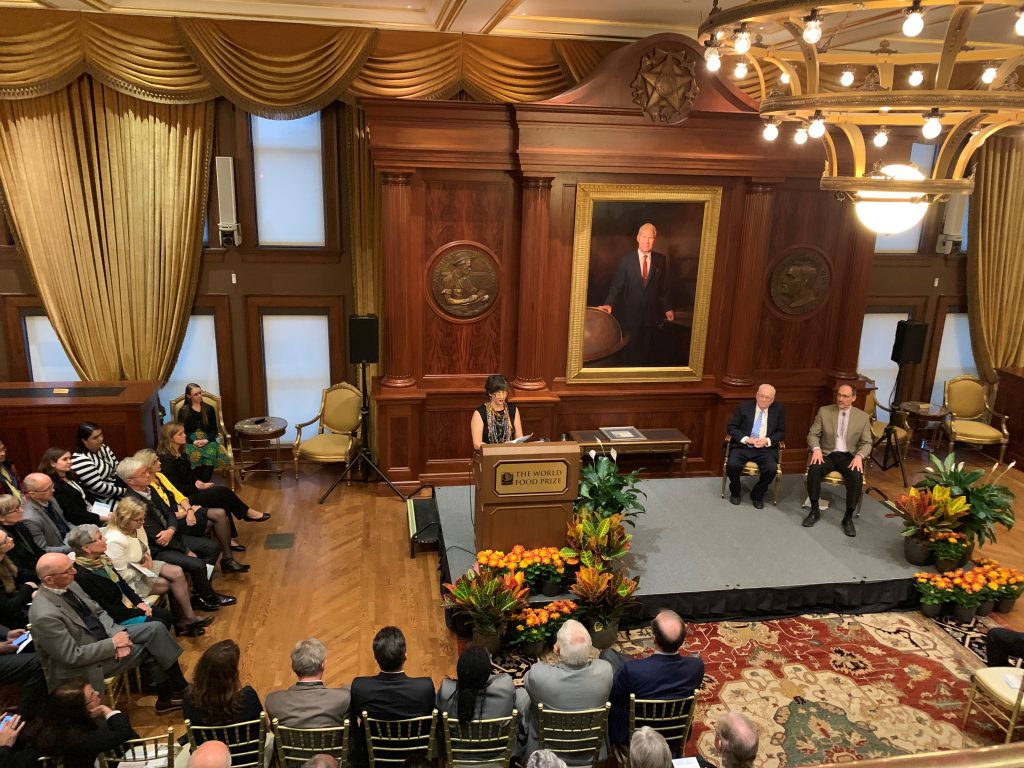
Food security for peace and development
The theme of this year’s Borlaug Dialogue was “Pax Agricultura: Peace through agriculture.” Panels addressed the interconnected issues of food security, conflict and development.
In the keynote address, USAID Administrator Mark Green issued a call to action and challenged participants “to take on the food and economic insecurity issues that are emerging from this era’s unprecedented levels of displacement and forced migration.” Ambassadors, ministers and development experts gave examples of the interdependence of agriculture and peace, how droughts and floods could create conflict in a country, and how peace can be rebuilt through agriculture.
“Agriculture could root out the insurgency better than anything we did,” said Quinn about the Khmer Rouge surrender in Cambodia, where he served as an ambassador.
In the 1994 genocide in Rwanda, more than 1 million people died in 100 days. Geraldine Mukeshimana, Rwanda’s minister of Agriculture and Animal Resources, explained that in the country’s rebuilding process, all policies centered on agriculture.
“Almost no country has come out of poverty without an agricultural transformation,” said Rodger Voorhies, president of Global Growth and Opportunity at the Bill & Melinda Gates Foundation, in a fireside chat with 2009 World Food Prize Laureate Gebisa Ejera.
Agriculture is vital because without food, we cannot build institutions, processes or economies. “You cannot talk about human rights if you don’t have any food in your stomach,” said Chanthol Sun, Cambodia’s minister of Public Works and Transportation.
Josette Sheeran, president and CEO of Asia Society, echoed this thought, “Nothing is more important to human stability than access to food.”
In a luncheon keynote, Víctor M. Villalobos, Mexico’s Secretary of Agriculture and Rural Development, spoke about CIMMYT, the MasAgro project, and the need to improve food systems and agriculture to fight violence and forced migration. “Agriculture, prosperity and peace are inextricably linked together.”
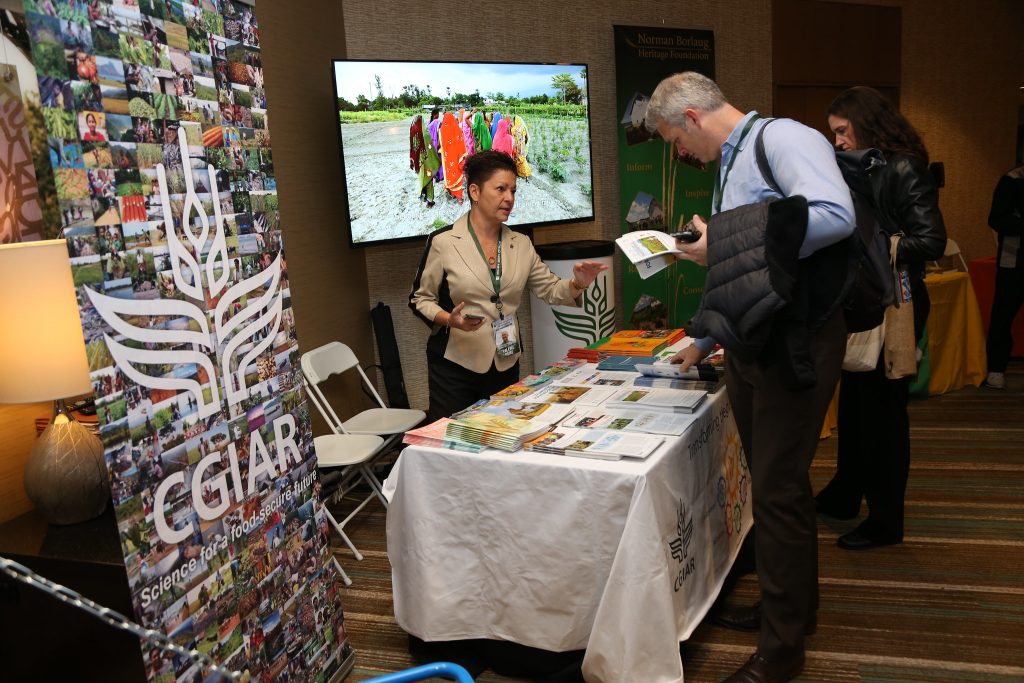
How to make technological innovations work
Innovations and technology can support a global food system transformation and help to achieve the Sustainable Development Goals.
In a panel on food security in the next decade, speakers shared the agricultural technologies they are excited about: data, gene editing, synthetic biology, data science and precision farming.
Josephine Okot, managing director of Victoria Seeds Ltd said, “We must have mechanization.” She described the fact that Ugandan women farmers still rely on hand tools as a “disgrace to humanity.”
The CGIAR Research Program on Climate Change, Agriculture and Food Security (CCAFS) organized a session where panelists discussed how to realize a transformation in food systems through next generation technologies, highlighting the role regulatory frameworks and policies play in the adoption of new technologies.
Making innovations work is about more than developing the product. “It takes a lot more than just a good seed to get a farmer to use it,” said 2019 World Food Prize Laureate Simon Groot. “It includes good distribution, good marketing, good training, etcetera.”
Technology adoption requires a human emphasis and cultural element in addition to technology development.
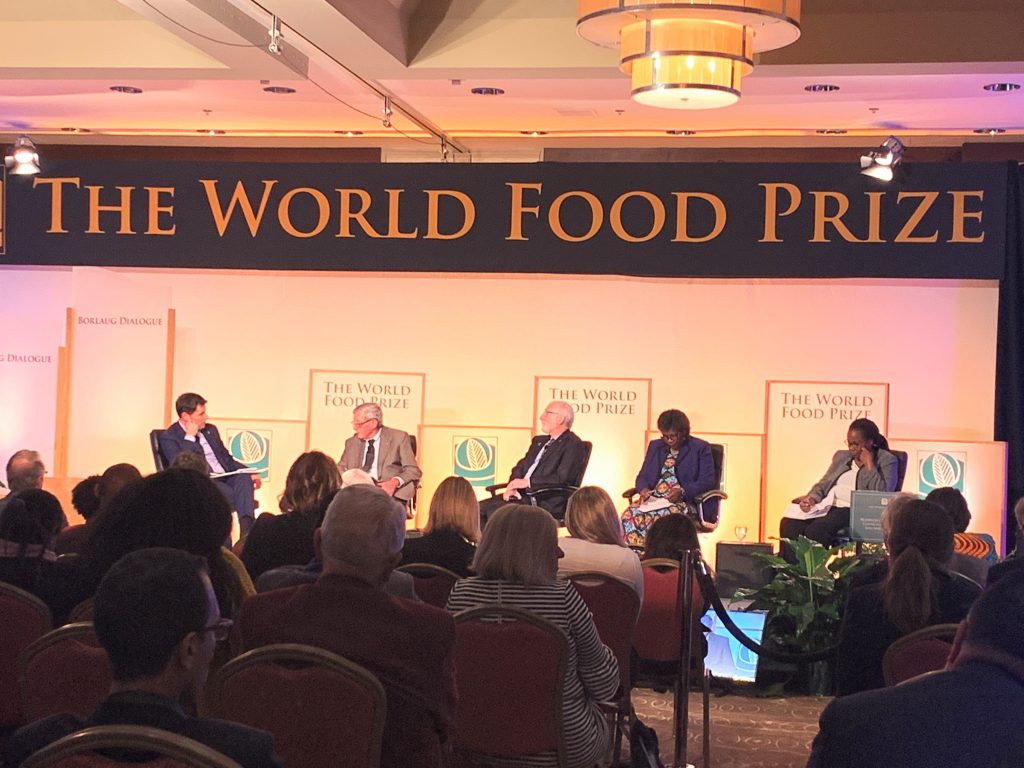
Breeding demand-driven crops for all
“The real enemy of farmers is lousy seeds,” said Simon Groot in his speech after receiving the World Food Prize.
CGIAR took the occasion of the World Food Prize to launch a new initiative, Crops to End Hunger. “We are looking for big solutions at CGIAR. Crops to End Hunger is one of them,” said CIMMYT Director General Martin Kropff. This program aims to meet the food, nutrition and income needs of producers and consumers, respond to market demands and increase resilience to challenges of the climate crisis.
“CGIAR released 417 new varieties last year. However, we can do more. Crops to End Hunger will rapidly excel breeding cycles,” said Elwyn Grainger-Jones, CGIAR Executive Director.
Felister Makini, deputy director general for Crops at Kenya Agricultural & Livestock Research Organization (KALRO), explained that focusing on the end users is what will have real impact. “It is important to develop technologies that are demand-driven so that farmers want to grow them and consumers want to buy and eat them.”
In a session to unpack the Crops to End Hunger initiative hosted by Corteva Agriscience and CGIAR, Marco Ferroni, Chair of the CGIAR System Management Board, said that CGIAR is shifting toward a more demand-driven agenda for plant breeding, where markets dictate what the research priorities should be.
“We must consider the human aspect in breeding,” said Michael Quinn, Director of the CGIAR Excellence in Breeding Platform (EiB). “This is where success will really come.”
Panelists discussed gender-conscious breeding, or taking both women and men’s desired traits into account.
The theme of gender was also emphasized by 2019 Norman Borlaug Field Award winner Hale Ann Tufan. She asked the Dialogue attendees to question gender biases and “not only to ‘take it to the farmer’ but take it to all farmers.”
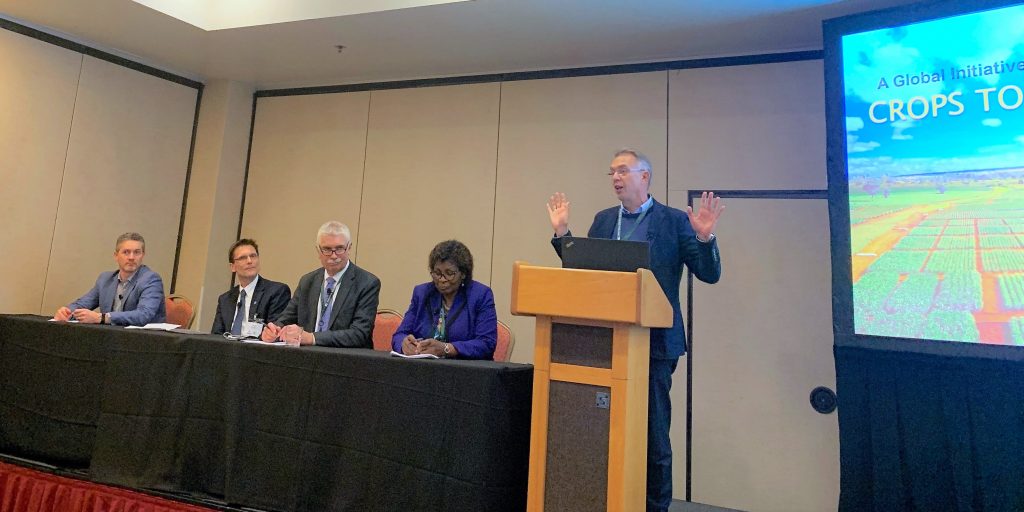
Cover photo: Plenary session of the 2019 Borlaug Dialogue. (Photo: World Food Prize)
The Seed Production Technology for Africa (SPTA) project is working to implement an advanced seed production system in Africa for the benefit of smallholder farmers in sub-Saharan Africa.
Hybrids are maize varieties in which the seed is produced by crossing two different parent lines, increasing the yield through heterosis. In hybrid maize seed production, the pollen-producing tassel must be removed on female parent plants to avoid self-pollination. If detasselling is not done in a timely and accurate way, pollen from the female plants can pollinate the ears, causing contamination and reduced seed quality. Currently, African seed production actors prevent self-fertilization during certified seed production by manual detasselling. This process requires considerable time and labor and reduces seed yield potential of the detasselled seed-bearing plants (female plants).
The Seed Production Technology for Africa (SPTA) project was launched to improve access for smallholders to high quality seed of modern maize varieties. The project targets small and medium seed production companies in the region to strengthen their capacity to produce high quality hybrid maize more efficiently, and at reduced cost. These modern hybrids will improve yield in drought prone and low fertility production conditions that are common among resource-constrained African smallholders, particularly those that are not able to access adequate fertilizers.
SPTA efforts will contribute to a more vibrant private seed sector by providing higher quality hybrid seed using a technology that fits well within existing production systems of small and medium enterprise seed companies. This will help to improve productivity gains for smallholder farmers and ease the burden on public funding for development.
The SPTA project originated from the Improved Maize for African Soils (IMAS) project that concluded in 2015. IMAS focused on developing maize hybrids that could use nitrogen fertilizer more efficiently to deliver higher yields under low fertility conditions.
How SPTA works
This project seeks to introduce a proprietary SPTA process that eliminates the detasselling step by utilizing a mutation in the naturally occurring maize gene – Ms44 – that aborts the development of microspores into pollen to create female parent plants that are male-sterile, eliminating the need to manually remove the pollen-producing tassels.
The cross-pollination between this female parent and the male parent is therefore more reliable, efficient, and cost effective. Importantly, whilst the SPTA process utilizes a transgenic maintainer line, no transgene will be present in the single cross production, three-way hybrid production, or the final hybrid seed, sold to farmers. The benefit of SPTA is that it works across genetic backgrounds, unlike cytoplasmic male sterility (CMS). An additional benefit of SPTA is hybrids produced using this technology yield 200 kg ha-1 more as a result of conserving resources for grain production.
Collaboration between Pioneer Hi-Bred International, Inc. (an affiliate of Corteva Agriscience) (Corteva), Agricultural Research Council of South Africa (ARC), Kenyan Agriculture and Livestock Research Organization (KALRO), Qualibasic Seed Company Limited (QBS) and CIMMYT
The SPTA project which is funded by the Bill & Melinda Gates Foundation originated from the Improved Maize for African Soils (IMAS) project that concluded in 2015, where the focus was on developing maize hybrids that could use nitrogen fertilizer more efficiently to deliver higher yields under low fertility conditions. The overall objectives of the project are to:
Objectives
The SPTA concept was confirmed suitable for tropical environments in Kenya, Zimbabwe, and South Africa in the first phase of the project (2017-2022). The current phase (2022-2024) is working towards licensing of the homozygous Ms44 seed to seed companies serving smallholder farmers in Africa. Eventually, the proprietary SPTA Maintainer Event and SPTA process will be licensed royalty-free by Corteva for further sublicensing in the production of SPTA Ms44 Maize in sub-Saharan Africa.
Ms44 and the SPTA Maintainer are introgressed into African-bred germplasm to produce male-sterile female parents (INP) suitable for low-nitrogen and drought environments in Africa. The commercial production of the INP will be carried out by QBS in South Africa after it has achieved full Excellence Through Stewardship (ETS) recognition and executed a royalty-free license agreement for the SPTA Maintainer Event with Corteva.
Seed companies will apply for release/registration and commercialize SPTA Ms44 maize only in sub-Saharan African countries that have acknowledged SPTA Ms44 maize as non-transgenic for the SPTA Maintainer Event. To produce and commercialize SPTA Ms44 maize, seed producers will have to access INP seeds from QBS and agree to implement all stewardship and management practices related to the use of SPTA Ms44 maize. Since the availability of SPTA Ms44 maize will be restricted this way, a percentage of its sales may be required to be paid into the FAO trust fund established by the Governing Body of the International Treaty on Plant Genetic Resources for Food and Agriculture.
Documents
SPTA project brief – Overview (updated November 2023)
SPTA project brief – Seed Production Technology for Africa: Efficient Seed Production Process for SMEs in Africa (updated November 2023)
SPTA project brief – Seed Production Technology for Africa: Modern and Pure Hybrids for African Farmers (updated November 2023)
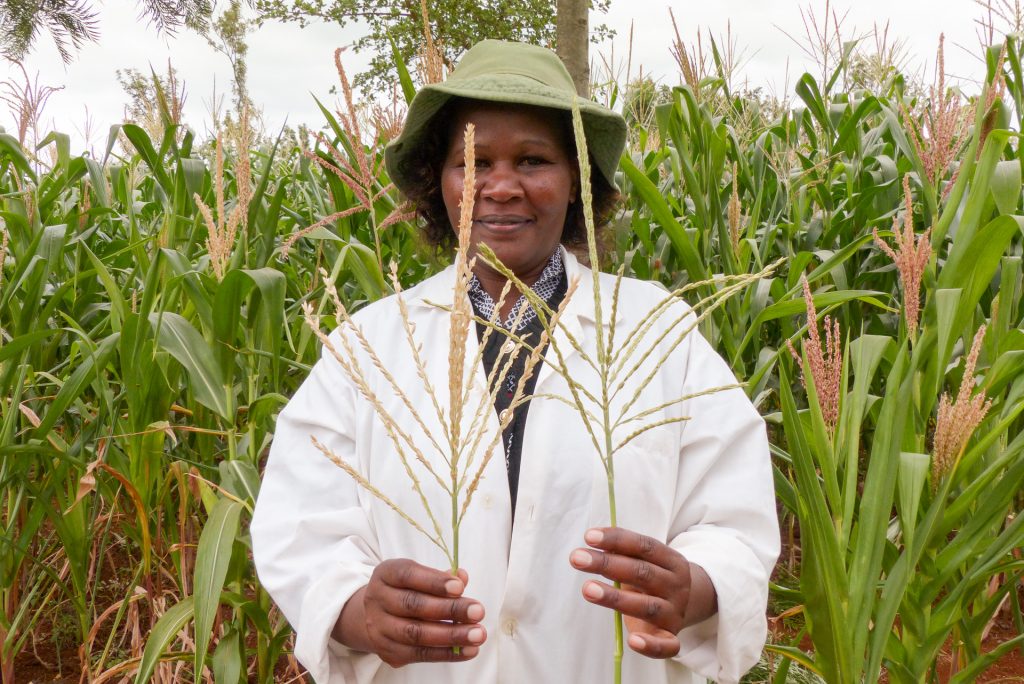
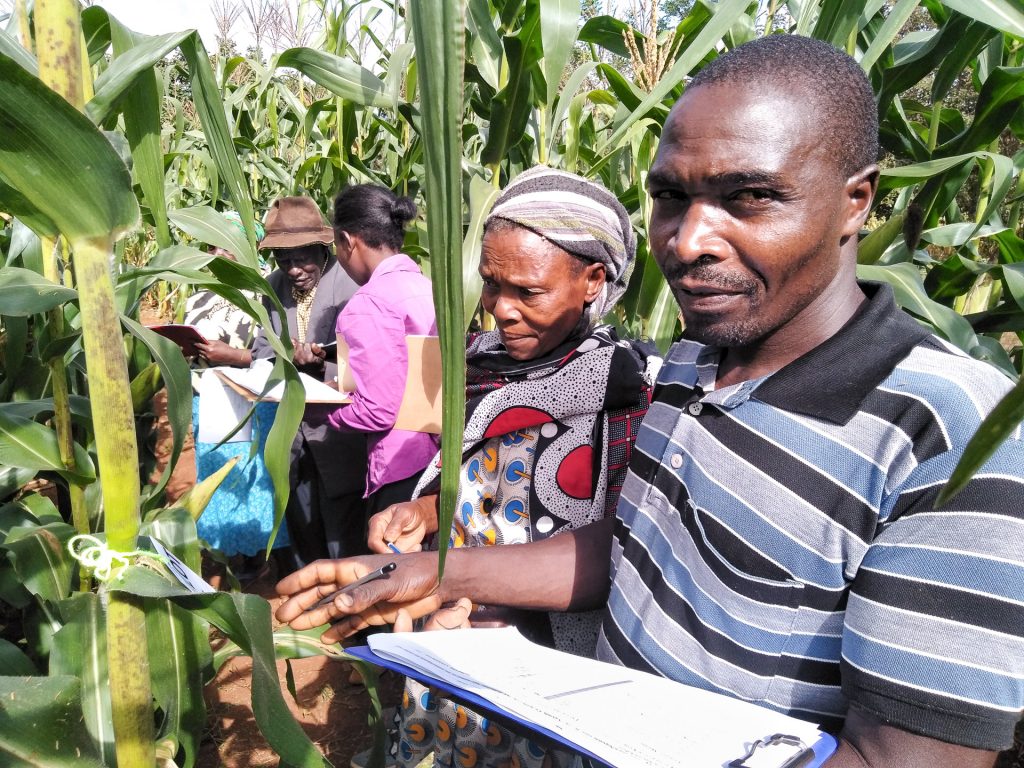
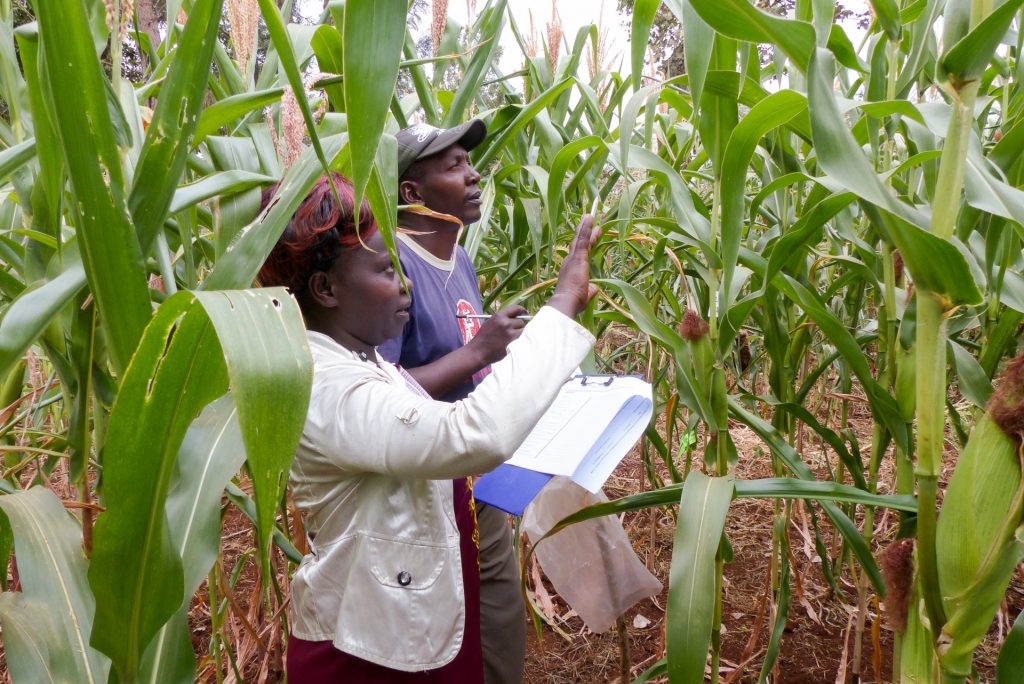
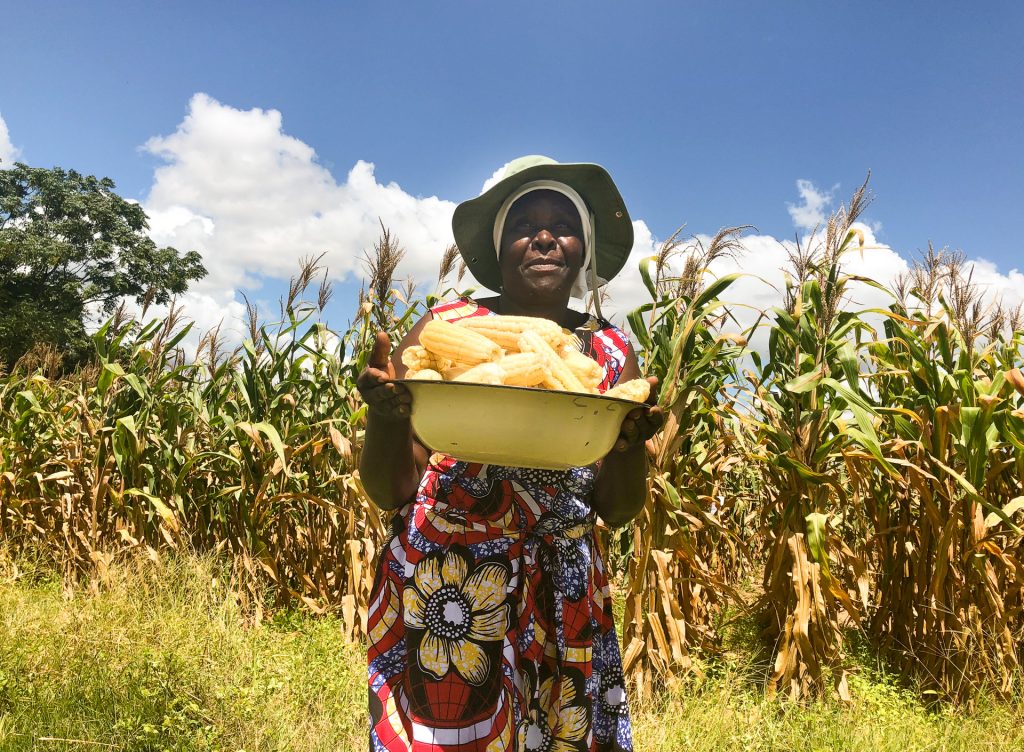
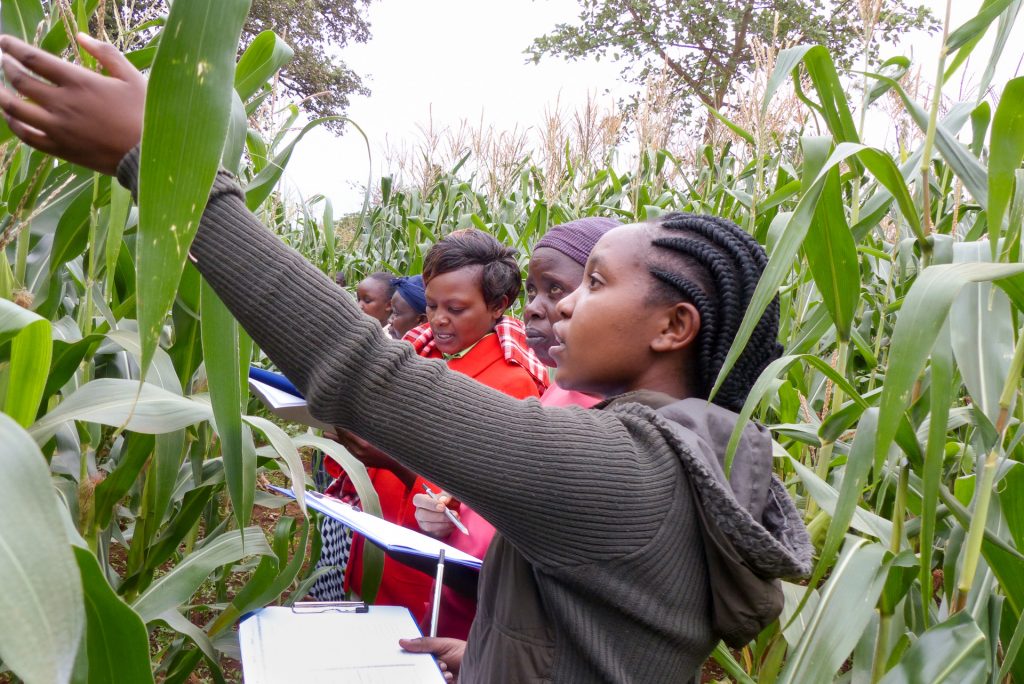
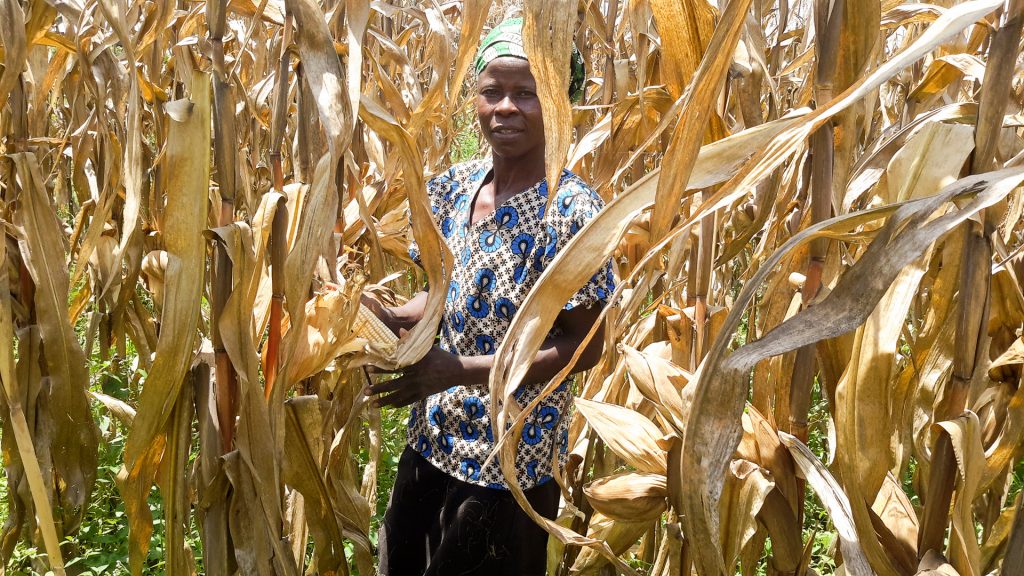
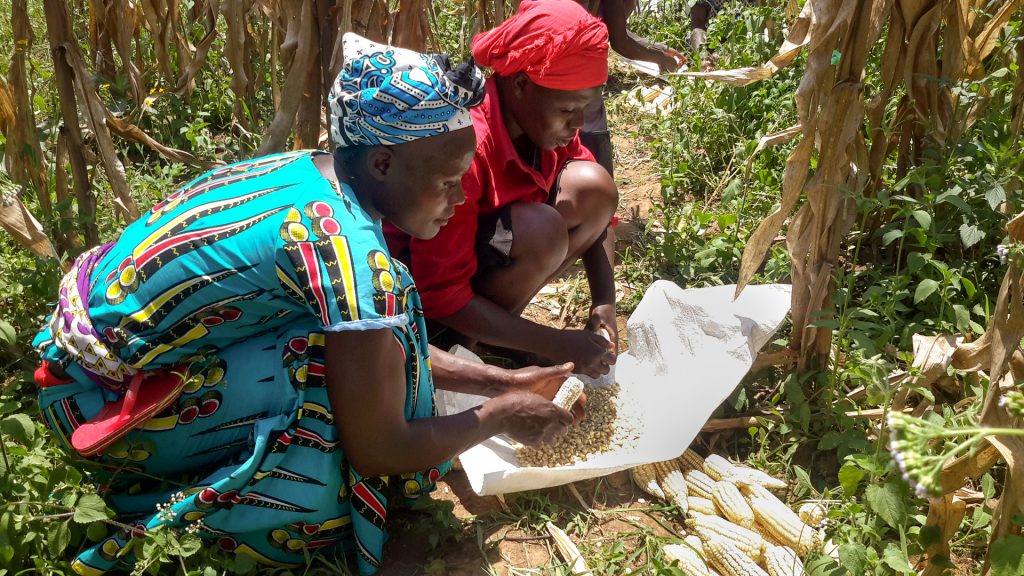
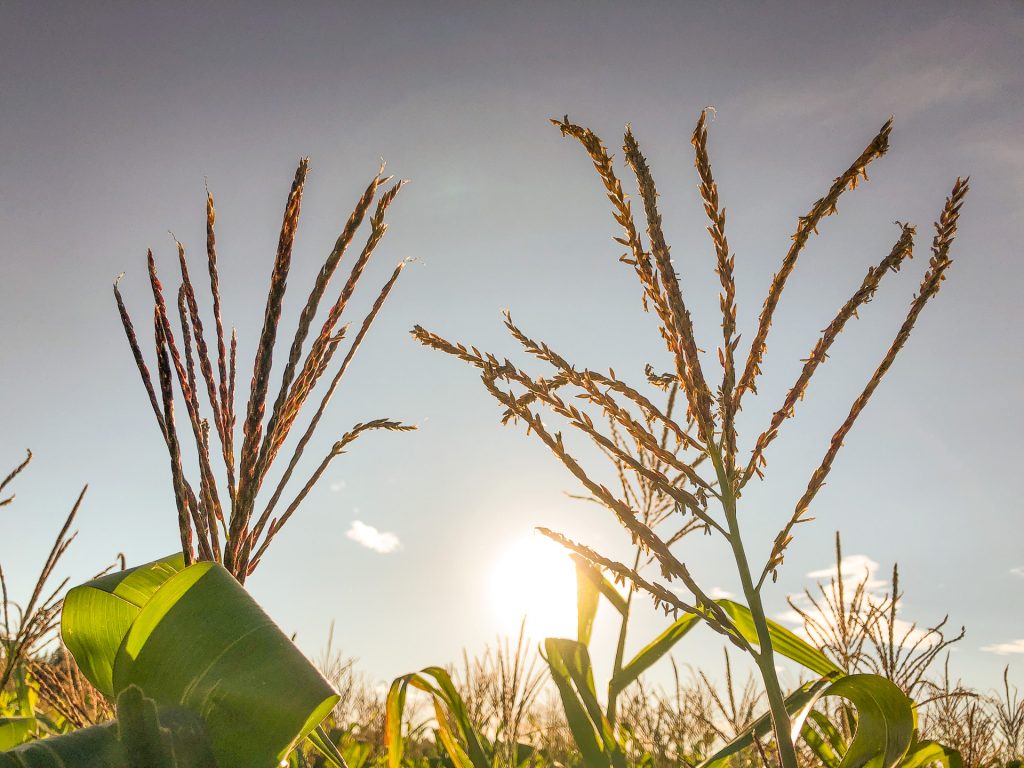
Around 115 members of the CGIAR breeding community, plus others representing national programs, universities, funders and the private sector, met for a three-day discussion of how to co-develop the next generation of advanced breeding programs that will improve the rate at which resource-poor farmers are able to adopt improved varieties that meet their needs.
The annual Excellence in Breeding Platform (EiB) Contributor’s meeting, held this year in Amsterdam from 13-15 November, caps a year of engagement with CGIAR Centers and national agricultural research system (NARS) partners around the world.
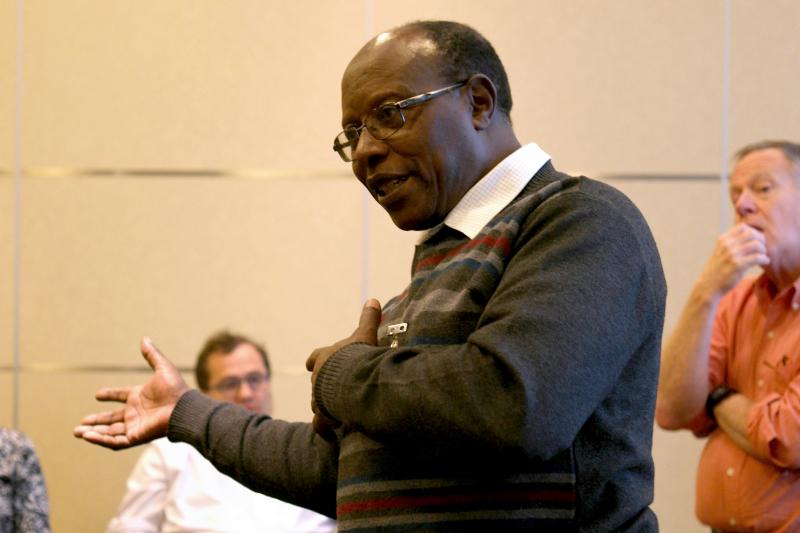
“Although breeding is one of the oldest functions in CGIAR, we have never had a meeting like this with scientists from all the centers,” said Michael Baum, director of Biodiversity and Crop Improvement at the International Center for Agricultural Research in the Dry Areas, (ICARDA). “Within CGIAR, plant breeding started as a science, but now we are looking at how to implement it not as a science but as an operation, as it is done in the private sector, so there are many new concepts.”
Key items on the agenda for November were new tools to develop product profiles and create improvement plans that will define the modernization agenda in each center and across the Platform itself, based in part on the Breeding Program Assessment Tool (BPAT) that most Centers completed in 2018.
The conversation was enriched by Paul Kimani (University of Nairobi) presenting on the Demand-led Variety Design project, which produced the book, “The Business of Plant Breeding.”
Ranjitha Puskur, gender research coordinator at the International Rice Research Institute (IRRI), started an animated discussion on how to incorporate gender into product design by thinking about customer segments.
Tim Byrne from AbacusBio introduced methods for identifying farmer preferences to be targeted by breeding programs.
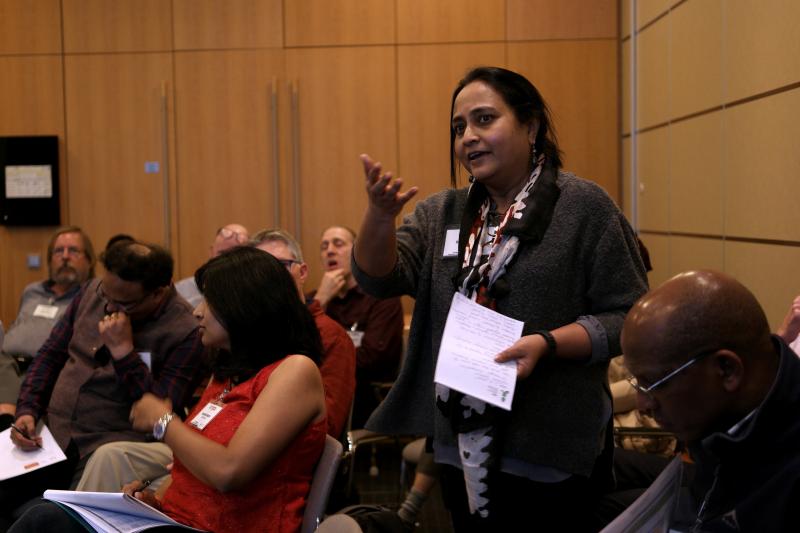
In breakout sessions, contributors were able to have detailed discussions according to their various specializations: phenotyping, genotyping and bioinformatics/data management. The direct feedback from contributors will be incorporated into EiB workplans for training and tool development for the coming year.
A key outcome of the meeting was an agreement to finalize the product profile tool, to be made available to EiB members in early December 2018. The tool helps breeders to work with other specialisms, such as markets, socioeconomics and gender, to define the key traits needed in new products for farmers. This helps to focus breeding activities towards areas of greatest impact, supports NARS to play a greater role, and creates accountability and transparency for donors, in part by defining the geographic areas being targeted by programs.
“Breeding trees is different to the annual crops,” said Alice Muchugi, genebank manager at the World Agroforestry Centre (ICRAF), “but we are seeing what we can borrow from our colleagues. By uploading what we are doing in maps, for example, donors are able to perceive the specific challenges we are undertaking.”
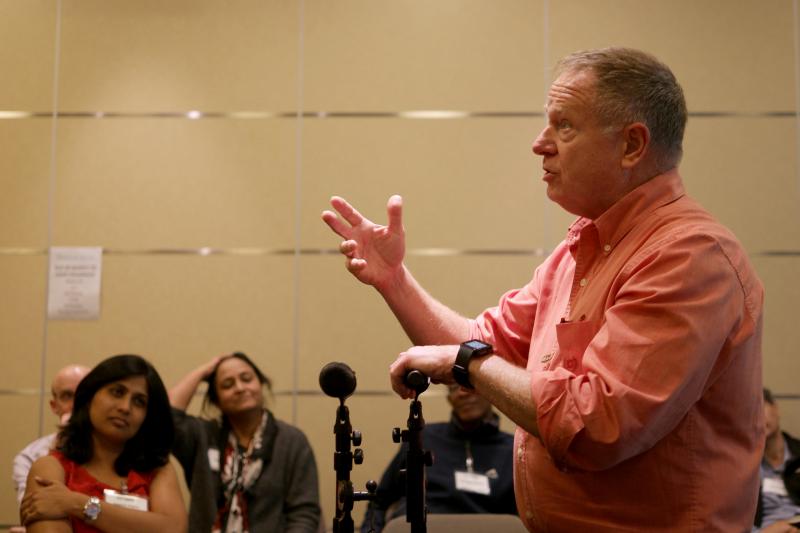
“I think we have realized there are lot of challenges in common, and the Platform is helping us all work on those,” said Filippo Bassi, durum wheat breeder at ICARDA. “I like to see all the people around the room, if you look at the average age there is a big shift; the number of countries present also tells you a lot.”
Tabare Abadie, R&D external academic outreach lead at Corteva Agriscience, also saw the meeting as a good opportunity to meet a broader group of people. “One of the take homes I hear is [that] there are a lot of challenges, but also a lot of communication and understanding. For me as a contributor it’s an incentive to keep supporting EiB, because we have gone through those changes before [at Corteva], and we can provide some know-how and experience of what happens,” Abadie explained.
“There are still a lot of gaps to fill, but this is a good start,” said Thanda Dhliwayo, maize breeder at the International Maize and Wheat Improvement Center (CIMMYT). “We need to get everyone involved, from leadership down to the guys working in the field.”
Michael Quinn, director of the CGIAR Excellence in Breeding Platform, discusses the CGIAR’s initiative on crops to end hunger.
Research partners to develop new maize hybrid seed production system to help smallholder farmers access modern, high quality maize hybrid seed.
Pretoria, South Africa, 26 October 2018 – An initiative launched in 2016 seeks to provide African smallholder farmers with better quality and high yielding hybrid maize seed. The Seed Production Technology for Africa (SPTA) initiative strives to improve seed production systems to ensure that high-quality hybrid maize seed is available to smallholder farmers, as well as to deliver new hybrids with a high yield potential adapted for low fertility areas common in sub-Saharan Africa (SSA).
SPTA will utilize a technology provided by Corteva Agriscience, and implemented by the Agricultural Research Council of South Africa (ARC) alongside the International Maize and Wheat Improvement Center (CIMMYT), and the Kenya Agricultural and Livestock Research Organization (KALRO). Funded by the Bill & Melinda Gates Foundation, the four-year initiative will cost US$ 6.4 million.
“As Africa faces significant challenges of low maize yields, climatic extremes and variability, costly farm inputs, threats due to pests and diseases, and growing demand for food, it is critical to provide smallholder farmers with access to high quality and stress resilient modern maize hybrids to allow them to increase yields and incomes,” said Kingstone Mashingaidze, Senior Research Manager at ARC.
The SPTA process will address pressing seed production concerns in the region that include insufficient genetic purity due to pollen contamination resulting from improper or incomplete detasseling practices. As a result, small and medium seed companies are expected to produce greater volume of hybrid maize seed at lower cost. Partner seed companies in the region will access the technology royalty free.
Maize productivity in Africa lags behind other maize producing regions, and through SPTA more smallholders will improve their yield. Average maize yield in much of Africa is approximately 2 metric tons per hectare, which is less than 20 percent of the yield level in more productive parts of the world. Farmers cannot access or afford high quality seed. Only 57 percent of the SSA maize growing area is planted with recently purchased seed; a lot of hybrids grown in the region are obsolete – 15 years or older compared to an average of less than 5 years in highly productive regions. In many situations, seeds of these older varieties are no longer suited for the climate and cropping environments that exist today.
Hybrid maize seed delivered through SPTA will have higher yield in low fertility environments. This will enable resource-constrained farmers to harvest more despite limited inputs like fertilizer. This means stronger livelihoods coupled with improved professionalism in the maize seed value chain for farmers, seed companies, consumers, and governments to deliver a more food-secure future.
SPTA originated from the Improved Maize for African Soils (IMAS) project that concluded in 2015. IMAS focused on developing maize hybrids that could use nitrogen fertilizer more efficiently to deliver higher yields under low fertility conditions prevalent in Africa. The IMAS project was funded by the Bill & Melinda Gates Foundation together with the United States Agency for International Development.
Issued by Agricultural Research Council
For more information contact:
Agricultural Research Council (South Africa)
Mary James
Tel: +27 (0) 18 299 6100, Cell: +27 84 817 2376, Email: JamesM@arc.agric.za
Corteva Agriscience (South Africa)
Barbra Muzata
Tel: +27-11-218-8600, Email: barbra.Muzata@pioneer.com
Notes to editors:
The Agricultural Research Council (ARC), a schedule 3A public entity, is a premier science institution that conducts research with partners, develops human capital and fosters innovation in support of the agricultural sector. The Agricultural Research Council provides diagnostic, laboratory, analytical, agricultural engineering services, post-harvest technology development, agrochemical evaluation, consultation and advisory services, food processing technology services as well as various surveys and training interventions. ARC has successfully collaborated with international partners in the WEMA project. ARC has successful partnerships with local seed companies for deployment of its products to smallholder farmers. For more information, visit the website at www.arc.agric.za
Corteva Agriscience™, Agriculture Division of DowDuPont (NYSE: DWDP), is intended to become an independent, publicly traded company when the spinoff is complete by June 2019. The division combines the strengths of DuPont Pioneer, DuPont Crop Protection and Dow AgroSciences. Corteva Agriscience™ provides growers around the world with the most complete portfolio in the industry — including some of the most recognized brands in agriculture: Pioneer®, Encirca®, the newly launched Brevant™ Seeds, as well as award-winning Crop Protection products — while bringing new products to market through our solid pipeline of active chemistry and technologies. More information can be found at www.corteva.com.
The International Maize and Wheat Improvement Center (CIMMYT) is the global leader in publicly-funded maize and wheat research and related farming systems. Headquartered near Mexico City, CIMMYT works with hundreds of partners throughout the developing world to sustainably increase the productivity of maize and wheat cropping systems, thus improving global food security and reducing poverty. CIMMYT is a member of the CGIAR System and leads the CGIAR Research Programs on Maize and Wheat, and the Excellence in Breeding Platform. The Center receives support from national governments, foundations, development banks and other public and private agencies.
Kenya Agricultural and Livestock Research Organization (KALRO) is a corporate body created under the Kenya Agricultural and Livestock Research Act of 2013 to establish suitable legal and institutional framework for coordination of agricultural research in Kenya with the following goals: Promote, streamline, co-ordinate and regulate research in crops, livestock, genetic resources and biotechnology in Kenya, and expedite equitable access to research information, resources and technology and promote the application of research findings and technology in the field of agriculture.